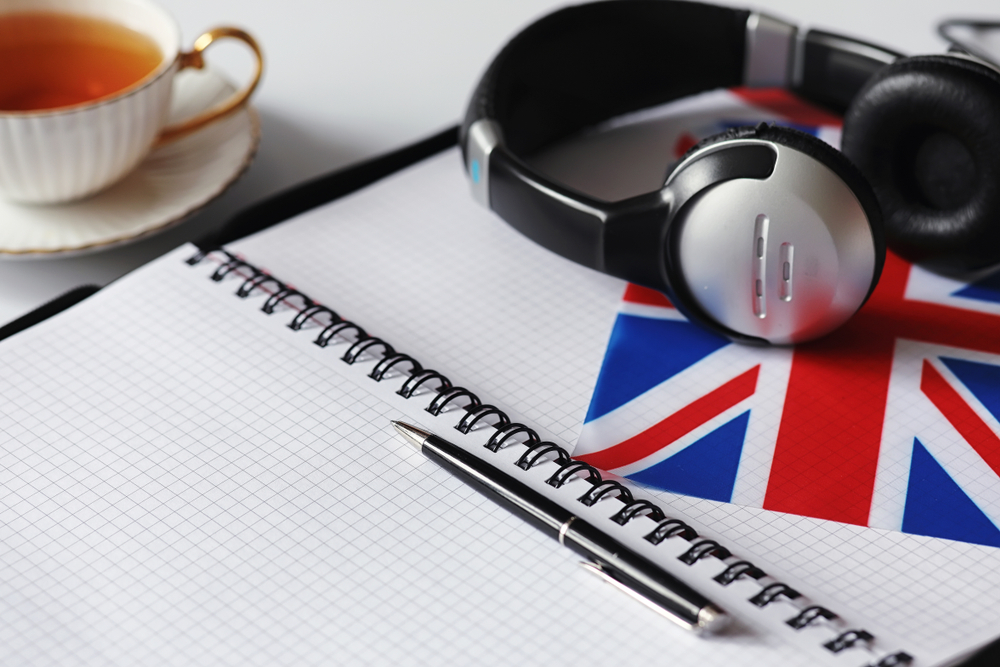
Unlock Fluent English: Powerful Strategies to Skyrocket Your Listening Comprehension
(Alternative Titles: Beyond Hearing: Mastering English Listening Comprehension; From Confused to Confident: Your Guide to Better English Listening)
Introduction: The Unspoken Key to English Fluency
Effective listening isn't just a passive skill; it's the active cornerstone of genuine communication and a crucial, often underestimated, component of mastering English. While many adult learners diligently practice speaking, they often hit a wall when faced with the rapid-fire pace of native speakers, the nuances of different accents, or the cacophony of noisy environments. It's that frustrating feeling of words washing over you, catching only fragments. This isn't just about understanding words; it's about grasping meaning, intent, and emotion. This article dives deep into proven strategies that will transform your listening ability from a source of anxiety into a powerful tool for connection and understanding. We'll explore how to become an active listener, anticipate information, decode conversations with keyword precision, harness the power of context, and leverage diverse resources. We’ll also tackle the common hurdles of unfamiliar vocabulary and diverse accents, empowering you to navigate any English conversation with greater confidence. Get ready to truly hear and understand English like never before!
1. The Art of Active Listening: More Than Just Hearing
Passive hearing is simply letting sound waves enter your ears. Active listening is a conscious, engaged process that demands your full attention and cognitive effort. It's the difference between a radio playing in the background and intently focusing on a gripping story.
Why it's crucial:
Active listening improves retention, helps you identify main ideas vs. supporting details, and allows you to pick up on subtle cues like tone of voice or emphasis that convey deeper meaning.
How to practice it:
- Eliminate Distractions: Find a quiet space. Turn off notifications. Your brain can't effectively process complex auditory information if it's juggling other tasks.
- Maintain Focus (Even When Listening to Media): If listening to a person, maintain eye contact (culturally appropriate). If listening to audio/video, try to visualize the speaker or the scene.
- Non-Verbal Cues (In Conversation): Nod, use minimal encouragers ("uh-huh," "I see," "right"). This signals to the speaker (and your own brain) that you're engaged.
- Mentally Paraphrase: As you listen, try to summarize the speaker's main points in your own words internally. Pause a podcast or video every few minutes and ask yourself, "What was just said?"
- Ask Clarifying Questions (In Conversation or Self-Reflection): If you're confused, don't be afraid to ask for repetition or clarification. If listening to media, pause and ask yourself, "What did that mean?" or "Why did they say that?"
2. Predicting Content: Your Mental Roadmap
Our brains love patterns and expectations. Predicting what you're about to hear can significantly enhance comprehension by priming your mind for specific vocabulary, topics, and structures.
Why it works:
When you have an idea of what to expect, your brain can more easily slot incoming information into a pre-existing framework, reducing cognitive load.
How to practice it:
- Before Listening: Look at the title of a video, podcast episode, or news segment. Who is the speaker? What is their likely perspective? What do you already know about this topic? Brainstorm related vocabulary.
- During Listening: Based on the first few sentences or the developing context, try to anticipate where the conversation or narrative is heading. For example, if a news report starts with "A powerful storm is approaching...", you can predict vocabulary related to weather, warnings, and potential impact.
- Pause and Guess: Intentionally pause audio/video and guess what might be said next or what question might be asked.
3. Focusing on Keywords: The Pillars of Meaning
Not every word in a sentence carries equal weight. Native speakers often miss filler words or even mishear individual words but still understand the overall message by latching onto keywords.
Why it works:
Keywords (usually nouns, verbs, adjectives, adverbs) convey the core message. Focusing on them helps you build a "skeleton" of understanding, even if you miss some connecting words.
How to identify them:
- Stress and Intonation: Native speakers naturally emphasize keywords. Pay attention to which words are spoken louder, with a higher pitch, or are drawn out slightly.
- Content vs. Function Words: Content words carry meaning (e.g., "cat," "jump," "quickly," "fence"). Function words are grammatical (e.g., "the," "a," "is," "over"). Focus on the content words first.
- Practice: Transcribe short audio clips and then highlight the words you think are most crucial to understanding the message. Compare with a native speaker if possible.
Insight: Don't panic if you miss a word. Keep listening for the next keyword to reconstruct the meaning.
4. Unlocking Meaning with Context Clues: Be a Language Detective
Language rarely exists in a vacuum. The surrounding words, the situation, the speaker's tone, and even non-verbal cues provide a wealth of information that can help you decipher unfamiliar words or complex ideas.
Why it works:
Context provides a safety net, allowing you to make educated guesses about meaning without needing to understand every single word perfectly.
Types of context clues and how to use them:
- Linguistic Clues:
- Definitions/Explanations: Sometimes the speaker directly defines a term ("A 'cul-de-sac,' which is a street closed at one end...").
- Synonyms/Antonyms: Look for words with similar or opposite meanings nearby. ("He was elated, truly overjoyed by the news.")
- Examples: The speaker might illustrate a concept with examples.
- Situational Clues: Who is speaking? To whom? Where are they? What is the overall topic? (e.g., understanding slang used by teenagers in a high school movie).
- Non-Verbal Clues (for video/in-person): Facial expressions, gestures, and body language can heavily influence meaning. A sarcastic tone can completely invert the literal meaning of words.
Insight: When you encounter an unknown word, resist the urge to immediately look it up. Try to infer its meaning from the surrounding context first. This builds stronger comprehension skills.
5. Diversify Your Diet: Using a Rich Variety of Resources
Exposing yourself to English in various forms and contexts is essential for developing a well-rounded listening ability.
Why it works:
Different resources offer different paces, accents, vocabulary sets, and levels of formality, preparing you for the real world.
Resource Breakdown & Strategic Use:
- Podcasts:
- Benefits: Huge variety of topics, natural conversational styles, different accents, often include transcripts.
- Strategy: Start with podcasts designed for learners (e.g., VOA Learning English, BBC Learning English) then move to native-level podcasts on topics you enjoy. Use the transcript to follow along, then listen again without it.
- News Broadcasts (TV & Radio):
- Benefits: Clear pronunciation (usually), formal language, exposure to current events vocabulary.
- Strategy: Watch/listen to short segments. Focus on headlines and main stories. Many news sites (NPR, BBC) offer audio with transcripts.
- Movies & TV Shows:
- Benefits: Authentic dialogue, slang, cultural references, visual context aids comprehension.
- Strategy:
- Subtitles Wisely: Start with English subtitles. Your goal is to eventually watch without them or only glance at them for truly unfamiliar words. Avoid subtitles in your native language if your goal is to improve listening.
- Re-watch Scenes: Watch a challenging scene multiple times – first for gist, then for detail.
- Choose wisely: Comedies and dramas with clear dialogue are often easier starting points than action movies with lots of mumbled lines or fast-paced thrillers.
- Music:
- Benefits: Repetition, rhythm, intonation.
- Strategy: Find songs with clear lyrics. Look up the lyrics and sing along. This helps with pronunciation and recognizing connected speech. Be aware that song lyrics can be poetic and not always grammatically standard.
- Audiobooks:
- Benefits: Exposure to a wide range of vocabulary and sentence structures, often excellent narration.
- Strategy: Choose books you're already somewhat familiar with or that are at an appropriate level. Many audiobook platforms allow you to slow down the narration speed.
6. Tackling Unfamiliar Vocabulary: Don't Let It Derail You
Encountering unknown words is inevitable. The key is not to let them stop you in your tracks.
Why it's a challenge:
Panic can set in, causing you to miss subsequent information while you're stuck on one word.
Strategies:
- Guess from Context (Revisited): This is your primary tool.
- Keep Listening: Often, the meaning becomes clearer as the conversation progresses, or the word might not be crucial to the overall understanding.
- Note it Down (If Possible): If you're listening to a recording, jot down the word (or how it sounds) and look it up after you've finished the segment. Don't interrupt your listening flow.
- Focus on the Gist: Ask yourself, "Can I understand the main idea even if I don't know this specific word?"
- Pre-Learn Key Vocabulary: If you're about to listen to something on a specific topic (e.g., a documentary about space exploration), spend a few minutes pre-learning common terms associated with that field.
7. Navigating the Maze of Accents: Embracing Diversity
English is a global language with a vast array of accents. Exposure is key to understanding.
Why it's a challenge:
Different pronunciations of vowels, consonants, and varied intonation patterns can make even familiar words sound foreign.
Strategies:
- Deliberate Exposure: Don't just stick to one accent. Actively seek out materials featuring speakers from the UK (Received Pronunciation, Cockney, Scottish, etc.), North America (General American, Southern, Canadian), Australia, New Zealand, Ireland, India, South Africa, and non-native speakers from various backgrounds.
- Use Online Resources: Websites like IDEA (International Dialects of English Archive) offer recordings of many accents. YouTube is a goldmine for accent exposure.
- Focus on Rhythm and Intonation: Sometimes, understanding the "music" of an accent is as important as individual sounds.
- Be Patient: Your ear will adapt over time. Start with accents that are closer to what you're used to, then gradually branch out.
- Remember: Even native speakers sometimes struggle with very strong or unfamiliar accents.
Conclusion: Your Journey to Enhanced Listening and Deeper Connection
Improving your English listening comprehension is a journey, not a destination. It requires patience, consistent practice, and a willingness to step outside your comfort zone. By actively engaging with the language, strategically using diverse resources, and consciously applying the techniques discussed – active listening, prediction, keyword focus, and contextual understanding – you will undoubtedly see significant improvement. Don't just aim to hear English; strive to understand it on a deeper level. The rewards – richer communication, greater confidence, and a more profound connection with the English-speaking world – are well worth the effort. Start today, listen actively, and unlock a new dimension of your English proficiency!
Your Turn
- What's one strategy from this article you'll try this week?
- What's your favorite resource for practicing English listening? Share in the comments below!
















